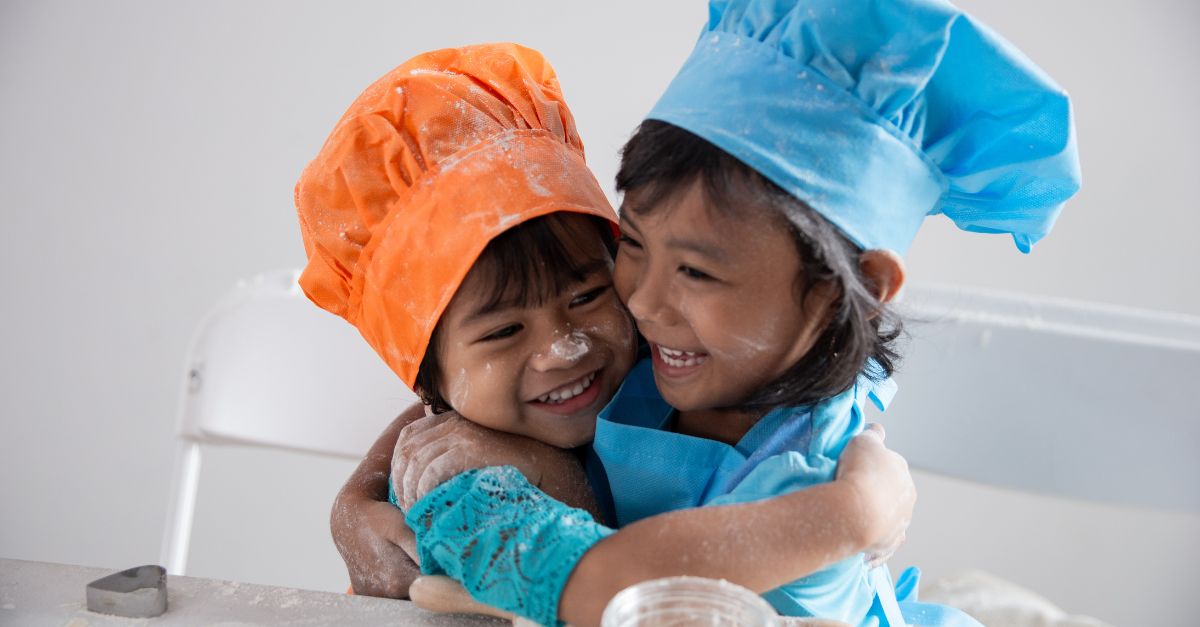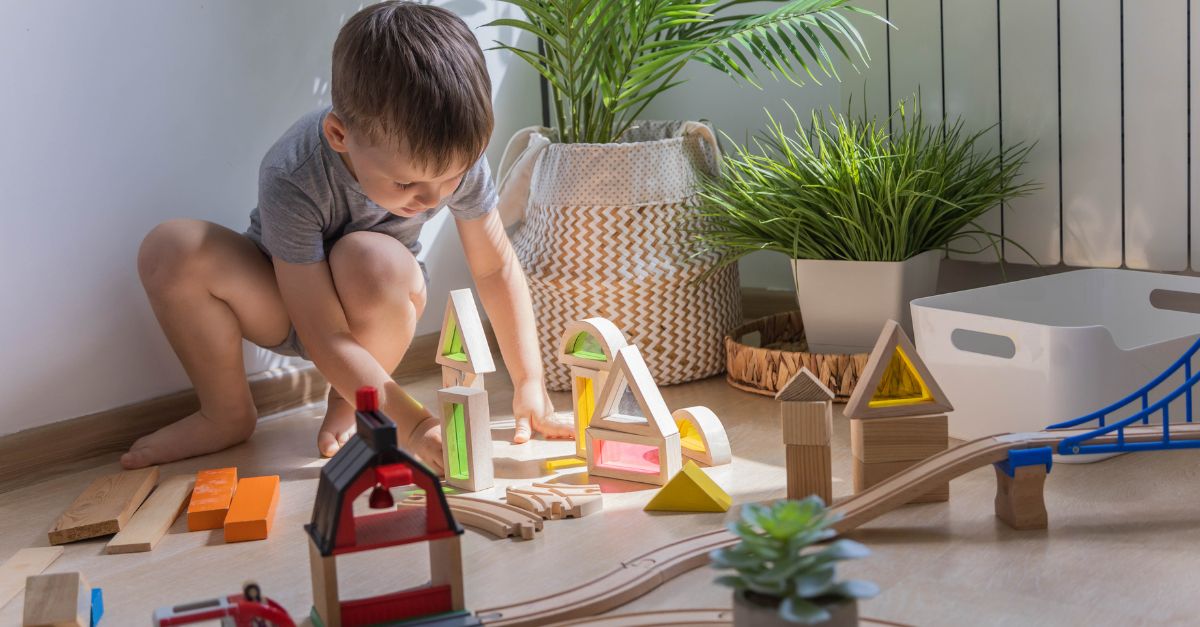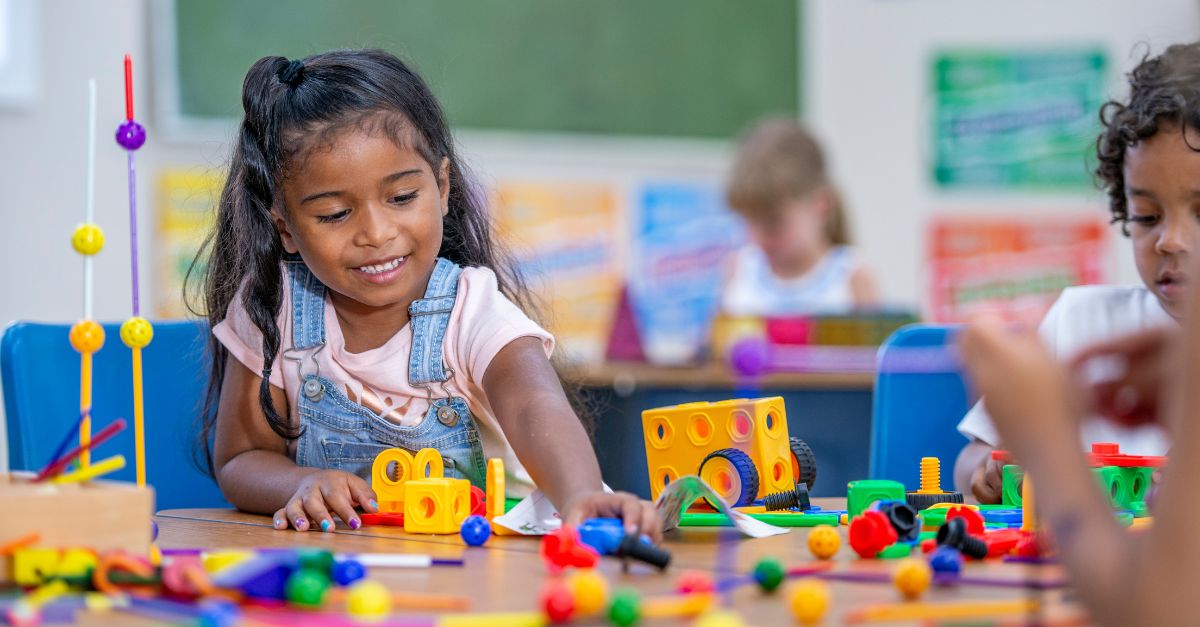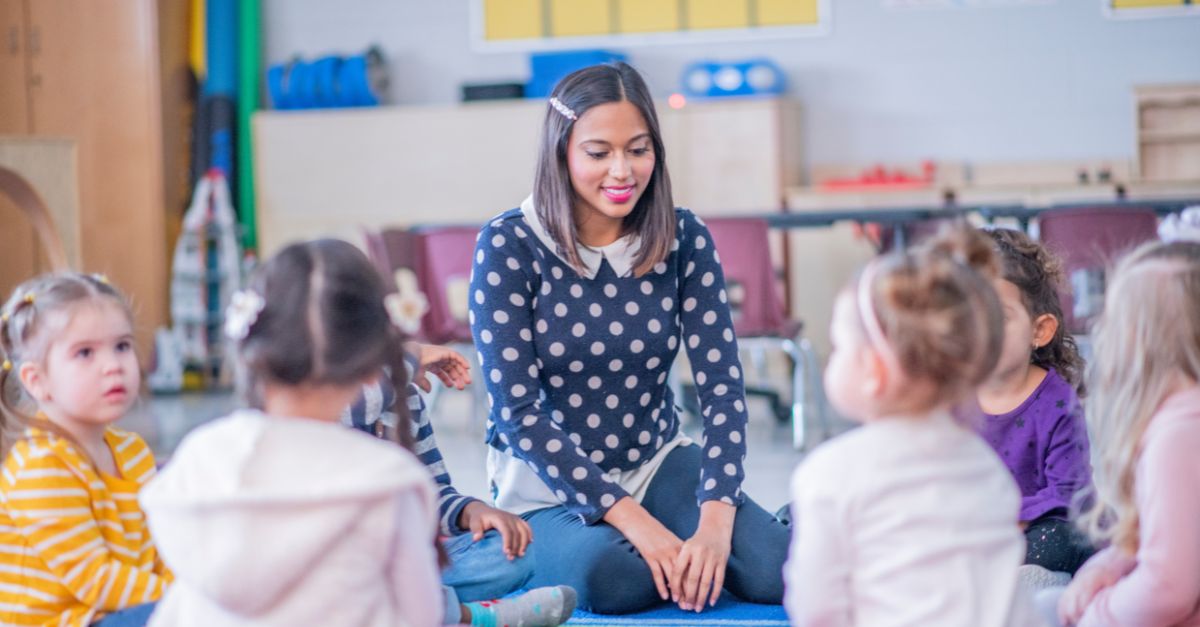Unlocking Play: Six Theories That Support Child Development
*First published November, 2020
*Updated, December, 2024
Play is a cornerstone of early childhood education, driving emotional, social, and cognitive development in young children. While common forms of play like pretend play and outdoor play are widely recognized, there are many theories developed by early childhood theorists and experts that provide deeper insight into children’s development. This blog explores six significant theories of play: Bronfenbrenner’s Ecological Theory, Jean Piaget’s Cognitive Developmental Theory, Mildred Parten’s Social Behaviour Theory, Reggio Emilias Approach to Play-Based Learning, Maria Montessori’s Theory of Play and Learning, and Lev Vygotsky’s Socicultural Theory of Play. By understanding these theories, early childhood educators, caregivers, and all childcare professionals can enrich play-based learning experiences and support critical milestones in child development.
1. Bronfenbrenner’s Ecological Theory
Urie Bronfenbrenner, a renowned developmental psychologist, examined how a child’s environment influences play and overall development. His ecological systems theory identifies five interconnected systems that shape young children’s interactions and behaviours during their early years.
The Five Environmental Systems
- Microsystem
- The microsystem consists of the immediate environment, such as family, friends, caregivers, and educators, directly influencing a child’s experience with play. The relationships in the microsystem are bi-directional, and the interactions a child has with those in their immediate environment directly impact their development. For example, a child whose family plays board-games together may see more enhanced social, cognitive and fine-motor skill development.
- Mesosystem
- The mesosytem refers to relationships between microsystems, like communication between parents and educators, play a role in a child’s development. For example, a strong parent-teacher partnership creates consistency and builds trust, helping children feel secure in their school environment and encouraging them to engage more confidently in play-based learning experiences.
- Exosystem
- The exosystem consists of the formal and informal structures that exist in a child’s life, such as local government, a parent’s workplace, policies within childcare centres, mass media and can indirectly impact their view of play. For instance, depending on the childcare program they are registered in, play activities may be influenced by a more structured curriculum or the amount of funding for indoor and outdoor play equipment.
- Macrosystem
- The macrosystem focuses on how cultural values, societal norms, and family beliefs affect the forms of play children engage in. For example, the beliefs about gender roles that a child witnesses in their home, may directly impact how they engage in dramatic play in the classroom. Their childcare center’s curriculum and philosophy towards play is another example of how a young child’s macrosystem directly impacts their approach to play.
- Chronosystem
- The chronosystem relates to elements of time, including life transitions or significant events, and how they shape a child’s experience. For example, moving to a new school may temporarily disrupt a child’s social development and play patterns.
Bronfenbrenner’s theory highlights that multiple parts of early childhood development, including play, are not an isolated activity but rather are influenced by interconnected systems that evolve as children grow (Guy-Evans, 2024).
2. Jean Piaget’s Cognitive Developmental Theory
Jean Piaget’s theory of cognitive development explores how children acquire knowledge, problem-solving skills, and reasoning abilities through play. Piaget identified stages of cognitive development that align with distinct ages and stages of play.
The Stages of Cognitive Development and Play
- Sensorimotor Stage (Birth to 2 Years of Age)
- Infants at this age seek to understand their environment through sensorimotor play, using their senses and motor skills to explore their environment. For example, feeling materials on a play mat, shaking rattles or stacking blocks helps develop sensory understanding, hand-eye coordination and spatial awareness.
- Preoperational Stage (2 to 7 Years of Age)
- Symbolic or dramatic play emerges as children begin to use imagination, pretend play, and role play to express their understanding of the world and their place in it. For example, a child pretending to be a doctor and treating a stuffed animal helps develop communication skills and emotional understanding.
- Concrete Operational Stage (7 to 11 Years of Age)
- As children develop through the concrete operational stage, they become less egocentric and begin to engage in more structured games with rules, like board games or group sports, which require collaboration and problem-solving skills. This stage encourages logical thinking, negotiation and team-work during play activities.
- Formal Operational Stage (11+ Years of Age)
- The final cognitive stage that Piaget proposed is the formal operational stage. From age 11 onwards, he proposed that older children’s thinking and understanding develop significantly. It is in this stage that they begin to engage in abstract reasoning and advanced play scenarios that involve strategy, planning, and reflection. Examples might include more complex board games or role-playing games.
Piaget’s theory emphasizes that play is integral to cognitive skills and aligns with the progression of a child’s reasoning abilities through defined age ranges (Babakr, Mohamedamin, Kakamad, 2019).

3. Mildred Parten’s Social Behaviour Theory
Mildred Parten’s theory focuses on the social development of children by identifying different types of play. These stages describe how children’s play evolves from solitary activities to complex group interactions.
The Stages of Play Development
- Unoccupied Play
- Unoccupied play occurs when infants explore without specific play goals. They may move their arms and legs or simply observe their surroundings. While this may seem aimless, it is an important stage for observation and self-discovery.
- Solitary Play
- Solitary play occurs when young children play independently with minimal social interaction. For example, a child stacking LEGO bricks alone is developing focus and motor skills.
- Onlooker Play
- In onlooker play, children observe others engaged in play but do not participate. This stage is essential for learning new play activities and social skills.
- Parallel Play
- During parallel play children play side-by-side without direct interaction. For instance, two children building towers independently with blocks are beginning to develop awareness of their peers.
- Associative Play
- At this stage children start to share materials and engage in similar activities but do not yet work toward a common goal. For example, two children may play with playdough together but create separate objects.
- Cooperative Play
- The final stage of social play involves collaboration and teamwork. For example, a group of children building a fort together assigns roles and works toward a shared objective, fostering communication skills and social interaction.
Parten’s stages provide a clear framework for observing children’s development of social behaviours and highlights the value of play in building relationships and teamwork.

4. Reggio Emilia’s Approach to Play and Learning
The Reggio Emilia approach to play emphasizes child-led, exploratory learning and the importance of the environment as a “third teacher.” This philosophy emerged in Reggio Emilia, Italy, and highlights the role of play in fostering creativity, communication skills, and collaboration among young children.
Key Elements of the Reggio Emilia Approach:
- Child-Led Play Activities: The Reggio Emilia Approach views young children as capable and competent learners who guide their own learning through curiosity and self-driven exploration.
- The Environment: The Reggio Emilia Approach views the environment as a “third teacher”. Classrooms and outdoor spaces are intentionally designed by educators to inspire play and encourage social interaction.
- Collaboration and Inquiry: Children are encouraged to collaborate on projects and play-based learning activities, fostering curiosity through questioning and dialogue. This approach nurtures their problem-solving abilities, language development, and social growth.
- Documentation: The goal of documentation through the Reggio Emilia approach is to listen to and better understand each child. Teachers observe, record, and reflect on children’s play experiences to further their learning and understanding, and they then share this knowledge with the child’s family.
5. Maria Montessori’s Play Theory
Maria Montessori’s play theory (Ruhl, 2024) emphasizes how children learn through hands-on, purposeful activities that foster children’s independence, cognitive skills, and motor skills. Montessori believed in the importance of “play as work” for young children, and that through the use of specific learning materials and curricula, as well as engaging in practical daily activities, children would develop their abilities and a keen understanding of the world around them.
Key Elements of Montessori Play
- Independence: One of the main goals of the Montessori method is to foster independence through the development of agency and practical life skills in the classroom.
- Child-Led Learning: It is a strong belief of the Montessori method that when children are given the opportunity to make choices for themselves, there is an increase in their confidence, autonomy and self-belief that they will carry throughout their lives.
- Role Play and Real-Life Tasks: In a Montessori classroom, play-based learning includes imitating real-world tasks, such as preparing food or cleaning up, to encourage practical skill development.
- Prepared Environment: Montessori play emphasizes creating calm, organized spaces where children feel invited into play and can concentrate on one activity at a time.
Lev Vygotsky’s Sociocultural Theory of Play
Lev Vygotsky emphasized the social and cultural context of play, believing that children learn best through social interaction and pretend play (McLeod, 2024). According to Vygotsky, play is a critical tool for developing higher-order cognitive functions, such as problem-solving, communication skills, and emotional development.
Key Concepts in Vygotsky’s Theory
- Zone of Proximal Development (ZPD): Children learn and develop skills by interacting with peers or adults who provide support just beyond their current abilities.
- Role Play: Pretend play allows children to take on different roles, helping them practice social behaviour and communication skills.
- Social Interaction: Through cooperative play and guided activities, children develop cognitive skills and build a deeper understanding of their world.
Why Understanding Theories of Play Matters
Understanding these theories enables educators and caregivers to create intentional play-based learning opportunities that support children’s development. From encouraging problem-solving skills in the sensorimotor stage to fostering social skills through cooperative play, play is a powerful tool for learning.
Here are some tips for integrating these theories into early childhood programs:
- Design play spaces that encourage different types of play, such as unoccupied play zones for exploration, or dramatic play corners for pretend play.
- Incorporate age-appropriate activities to align with specific stages of cognitive development.
- Encourage social interaction through group games or side-by-side play, dramatic play, or collaborative projects for older children.
- Observe and document milestones in children’s development to tailor play activities to their needs, interests and developing skills.
- Communicate with families about the benefits of play-based learning and the learning and growth you are witnessing in their child.
If you’re an early childhood educator looking to track and share children’s developmental progress through play, Lillio is here to help! Lillio allows you to document learning, communicate with families, and celebrate milestones all in one place.
Maddie is a Registered Early Childhood Educator with a Master's in Early Childhood Studies. Her specialty is in Children's Rights and she is currently a Content Strategist for HiMama!
More by Maddie




